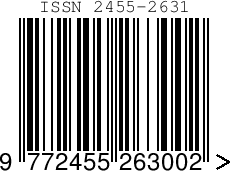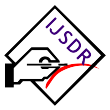Imp Links for Author
Imp Links for Reviewer
Research Area
Subscribe IJSDR
Visitor Counter
Copyright Infringement Claims
Indexing Partner
|
Published Paper Details
|
|
| Paper Title: | Role of transvaginal ultrasound in diagnosis of female infertility |
| Authors Name: | Vandana Mourya , Mukesh Prasad Kushwaha , Anupama Sharma , Himanshu Shah |
| Unique Id: | IJSDR2305019 |
| Published In: | Volume 8 Issue 5, May-2023 |
| Abstract: | Infertility is defined as failure to conceive a desired pregnancy after 12 months of unprotected intercourse. Approximately 10% of married couples are infertile. Males and females are equally affected. Ultrasound is a useful and first line investigation tool available to assess the causes of female infertility and to institute some of the treatments used to ameliorate infertility. Ultrasound is an effective, safe, inexpensive, radiation free, non-invasive tool, readily available, easy to use and easily repeatable approach to evaluate female infertility worldwide. It improves the quality of care provided in female infertility workup by facilitating rapid diagnosis and the visualization of changes in female reproductive physiology required to direct therapy. Ultrasound is the most widely used method of imaging in gynecology and has revolutionized the management of female infertility worldwide. Aims and Objectives: 1. To study the normal pelvic organ anatomy. 2. To study the various uterine, ovarian and tubal causes in patients presented with infertility and menstrual irregularity. Methodology: This is a prospective observational study was conducted in Department of radiology, National Medical College & teaching Hospital, Birgunj, Parsa Nepal for the 6 month duration in the patients presented with the primary or secondary subfertility (Infertility). Patients included in this was of reproductive age group 21 years to 40 years with ethical clearance from the Institutional Review Committee of National Medical College and after obtaining informed consent of the patient. Ultrasound Assessment: All ultrasound assessments was performed using the same machine Logiq P7 with transabdominal approach by 4 MHz transduced and transvaginal approach by 8MHz TVS transducer. Data processing and analysis was done by using SPSS version 26 and statistical tests applied are count, percentage, mean, median and standard deviation. Findings was presented as table, bar diagrams and pie-charts. Result Ultrasonography (USG) (mainly transvaginal/endovaginal) It is the first-line investigation. It is readily available, inexpensive, noninvasive, radiation-free, relatively less time consuming, and easily repeatable. USG helps in determining the morphology of the uterus and ovaries, uterine and ovarian perfusion, and endometrial thickness, volume, and vascularity. In our study 44 cases included in 6 month of duration of study who presented with menstrual irregularity, amenorrhea, dysmenorrhea, menorrhagia with infertility in the reproductive age group of 21-40 years. Most commonly cases seen in 26-30 years followed by 21-25 years of age group. Both primary and secondary infertility seen. Conclusion Evaluation of infertility is impossible without ultrasound assessment. This tool helps all radiologist to examine the pelvic organs (ovaries, uterus, fallopian tube, peritoneal cavity) and is used to prediction of ovulation, endometrial receptivity and many disorders that may affect infertility Key Words: Transvaginal Ultrasound ( TVS) , Infertility, Menstrual abnormality, Uterine cause, Ovarian cause PID and Space occupying lesion. |
| Keywords: | Key Words: Transvaginal Ultrasound ( TVS) , Infertility, Menstrual abnormality, Uterine cause, Ovarian cause PID and Space occupying lesion. |
| Cite Article: | "Role of transvaginal ultrasound in diagnosis of female infertility", International Journal of Science & Engineering Development Research (www.ijsdr.org), ISSN:2455-2631, Vol.8, Issue 5, page no.139 - 145, May-2023, Available :http://www.ijsdr.org/papers/IJSDR2305019.pdf |
| Downloads: | 000337209 |
| Publication Details: | Published Paper ID: IJSDR2305019 Registration ID:206033 Published In: Volume 8 Issue 5, May-2023 DOI (Digital Object Identifier): Page No: 139 - 145 Publisher: IJSDR | www.ijsdr.org ISSN Number: 2455-2631 |
|
Click Here to Download This Article |
|
| Article Preview | |
|
|
|
Major Indexing from www.ijsdr.org
| Google Scholar | ResearcherID Thomson Reuters | Mendeley : reference manager | Academia.edu |
| arXiv.org : cornell university library | Research Gate | CiteSeerX | DOAJ : Directory of Open Access Journals |
| DRJI | Index Copernicus International | Scribd | DocStoc |
Track Paper
Important Links
Conference Proposal
ISSN
 |
 |
DOI (A digital object identifier)
  Providing A digital object identifier by DOI How to GET DOI and Hard Copy Related |
Open Access License Policy
Social Media
Indexing Partner |
|||
| Copyright © 2024 - All Rights Reserved - IJSDR | |||






Facebook Twitter Instagram LinkedIn